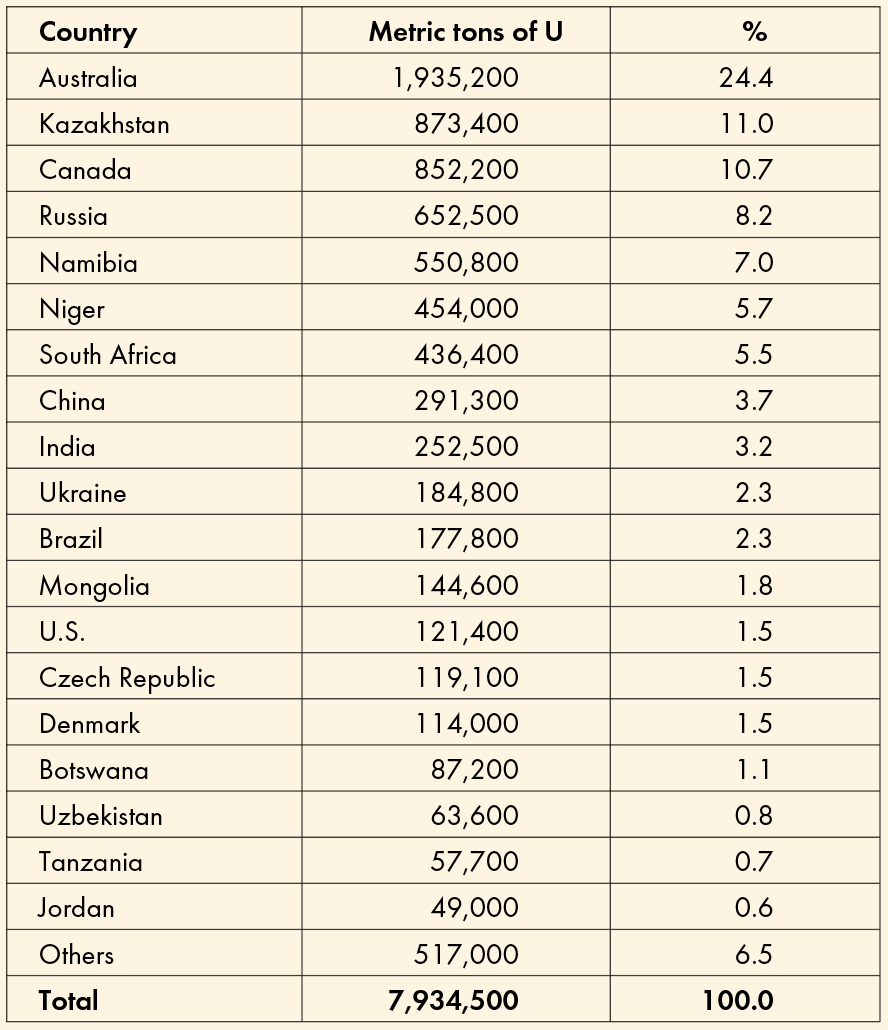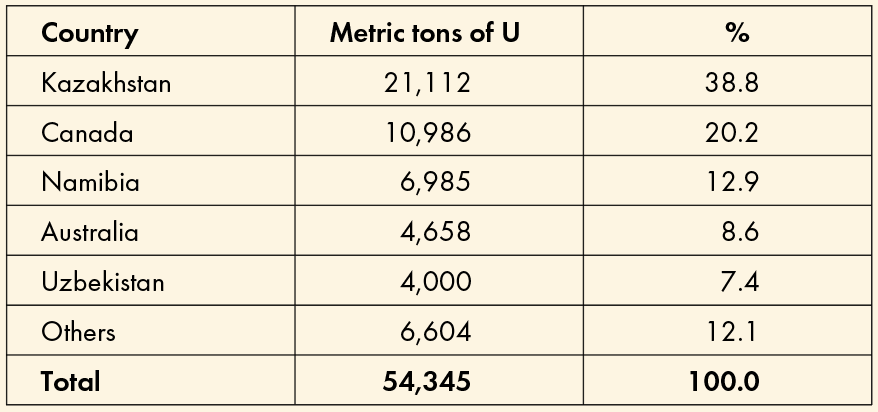According to the latest report from the Nuclear Energy Agency,a in 2023, total recoverable uranium resources of economic interest exceeded 7.9 million metric tons (Table I). Australia, Kazakhstan, Canada, Russia, and Namibia are the top five countries, accounting for a combined 61.3%, while the U.S. is ranked #13 at 1.5% of the total.

Table I. Uranium recoverable resources, 2023. Credit: Nuclear Energy Agency
In 2023, Kazakhstan, Canada, and Namibia were the three top producers of uranium (intended as uranium before enrichment), accounting for 71.9% of the total (Table II). Globally, 54,345 metric tons of uranium (tU) were mined and leached, corresponding to a 9.8% increase year-over-year. In recent years, the gap between production and demand was filled up by existing stockpiles and spent fuel reprocessing.

Table II. Uranium production, 2023. Credit: Nuclear Energy Agency
The Nuclear Energy Agency states that there are currently 438 commercial nuclear reactors operating worldwide and 58 under construction.a In 2025, these reactors will consume 59,779 tU at a minimum. At this rate, existing resources will last 132 years (Table III).

Table III. Uranium demand, 2025–2050 (metric tons). Credit: Nuclear Energy Agency
Considering that consumption of uranium for power plants is projected to grow significantly through 2050, and that uranium finds application in other fields besides nuclear power stations, such as medicine, space exploration, naval propulsion, and defense, analysts expect that uranium reserves will be more likely depleted within the next 90 years. However, this projection may be extended if nuclear energy becomes more reliant on alternative materials (e.g., thorium), recycling, and new generations of advanced reactors that make a more efficient use of nuclear fuels.
Return to main article: “Nuclear fuel market: Current trends and research opportunities“
Issue
Category
- Energy materials and systems
Article References
aNuclear Energy Agency and International Atomic Energy Agency, “Uranium 2024: Resources, Production, and Demand.” Published 23 April 2025. Accessed 24 June 2025.
Related Articles
Market Insights
Lessons learned from the rollout of 5G technology help guide 6G preparations
While it may seem like the 5G communications and data network has just been rolled out—and is, in fact, still in the process of being deployed—communications providers, governments, and researchers are already preparing for the sixth generation of wireless technology, or 6G. Compared to 5G, which aimed to expand the…
Bulletin Features
The synthetic data revolution: How AI is redefining quality control in ceramics manufacturing
The ceramics industry stands at the brink of a fundamental shift in how quality control is conceived, implemented, and scaled. For decades, the promise of artificial intelligence-powered inspection systems was held back by a persistent obstacle: the scarcity of high-quality data. This bottleneck made it difficult for ceramics manufacturers to…
Market Insights
Global edge AI market
The global market for edge artificial intelligence was valued at $8.7 billion in 2024 and is expected to grow at a compound annual growth rate (CAGR) of 36.9% to reach $56.8 billion by the end of 2030. Edge computing refers to data processing that occurs closer to where the data…




